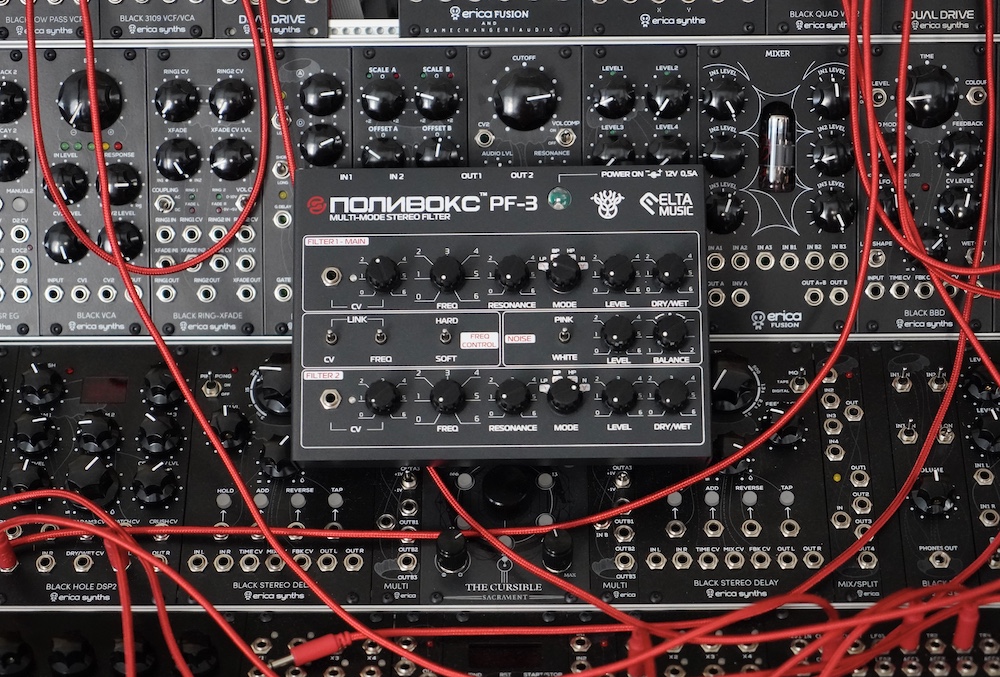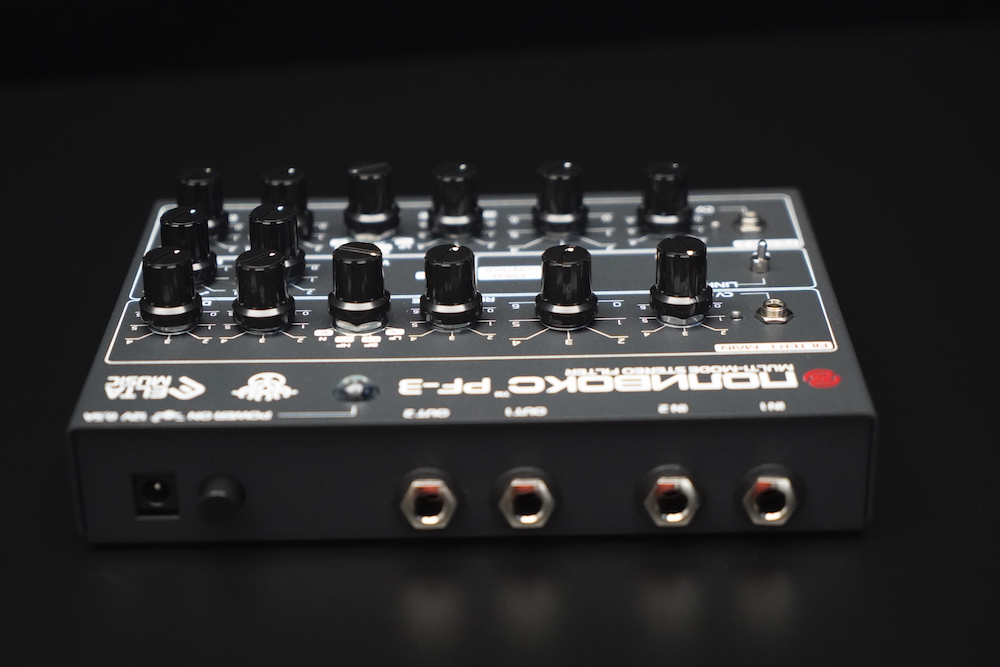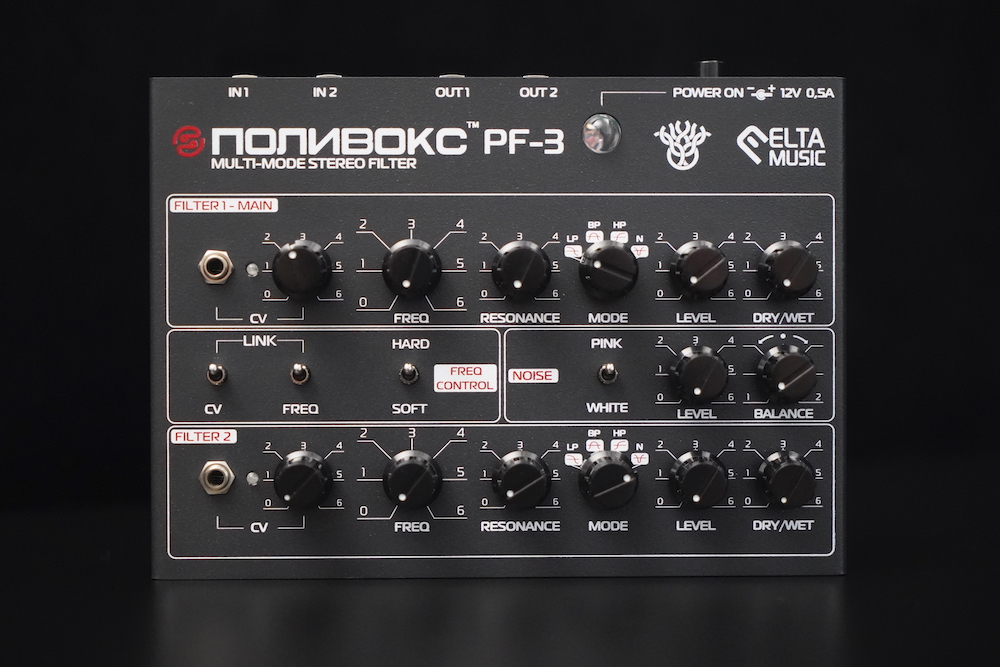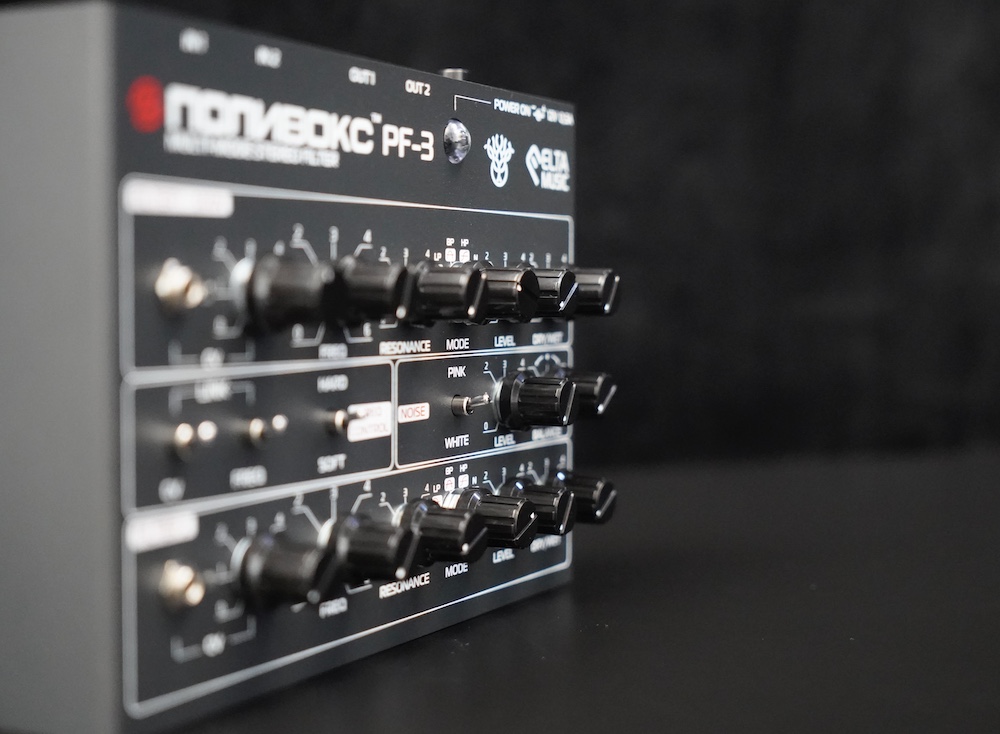A Soviet synth gets reinvented as a stereo filter module with attitude. Greg Scarth explains why this characterful little box works so well on any sound you throw at it, even for DJs.

The front panel of Elta Music’s Polyvox PF-3 tells a story via one large cyrillic logo, reading Поливокс. Designed by Vladimir Kuzmin and produced at the Formanta Radio Factory in Kachkanar, the Поливокс – romanised as Polivoks or Polyvox – could be considered the Soviet equivalent of classic analogue synths like the Minimoog or Korg MS-20. Produced from 1982 until 1990, the duophonic synth has since become something of a cult classic, not just in Russia but worldwide, thanks to its unique tone and especially its versatile and characterful multi-mode filter.
Elta Music was founded in Moscow in 2017 by Ukrainian musician Arseniy Tokarev. The operation has moved to the Latvian capital Riga since Russia’s invasion of Ukraine, but what hasn’t changed is the brand’s focus on reinventing the circuits of the Polivoks, both through full synths like the Polivoks Mini and modules such as the PM-02 synth voice.
The PF-3 is Elta’s latest take on the Polivoks 12dB/octave filter circuit, this time combining two filters into a stereo (or dual-channel) format, with CV control and a noise generator. Each channel has its own level control and wet/dry control for parallel processing, but it’s a pretty simple setup which is easy to get to grips with. The Polivoks filter is famously raw, aggressive and nasty in a way that’s even more extreme than something like the classic Korg MS-20 filter circuit. The original synth offered low-pass or band-pass modes but Elta have added high-pass and notch modes here for added flexibility. The PF-3 nails the sound itself, harsh and distorted if you want but just about capable of being tamed at lower resonance settings, or by switching the toggle switch from Hard (original Polivoks sound) to Soft (a slightly milder option, especially at high resonance). Despite its powerful colour, there isn’t necessarily a specific type of sound or style of music which the PF-3 lends itself to more than any other; it’s a surprisingly versatile filter which works nicely on everything from synths to drum machines and samples. You could even use it as an extreme DJ effect, using it as an insert effect or even putting it on the stereo output of your mixer and filtering the sound like an isolator on steroids.

With the PF-3, Elta have made the Polivoks filter circuit controllable and versatile for studio, live and even DJ use. Realistically, the point here isn’t necessarily to compare the PF-3 with an original Polivoks or other mono filters, but to compare it with stereo filter modules such as the Erica Synths Acidbox or the Sherman Filterbank. The PF-3 carves out its own niche compared to both, coming in cheaper than either and offering a very distinct sound. It’s less versatile than the Filterbank, but arguably more flexible than the Acidbox thanks to the option to use the PF-3’s two channels independently (there’s only one set of controls linked for both channels of the Erica unit).
There are a couple of little quirks, but if anything they only serve to give the PF-3 even more character. Firstly, like a lot of old-school analogue instruments, the unit should be powered on and then left for five minutes to warm up before being used, allowing the electronic components to stabilise since there’s no internal temperature compensation as you’d find on modern analogue instruments. Secondly, Elta point out that the design of the original Поливокс filter is inherently imprecise thanks to the UD1208 integrated circuits used to create the circuit. As such, no two filters are identical, meaning that there’s an inherent discrepancy between the two channels of the PF-3. In practice, Elta encourage you to embrace this as part of the character when using the unit in stereo.

The most obvious way to use the PF-3 is on a stereo signal with the two channels linked via the frequency toggle switch, meaning that the top row of controls, marked Filter 1 – Main, adjusts the parameters for both channels. However, there’s a lot of creative fun to be had by unlinking the two channels and applying different settings to each, creating stereo width as the filters move against each other for the left and right signals. Applying different filter modes also works nicely here. Of course, you don’t need to use it as a stereo unit, and there’s lots of fun to be had from routing a separate mono signal into each channel and either tweaking the knobs by hand or modulating the filter cutoff frequency via the CV inputs.

Recent times haven’t been simple for Elta Music, so it’s even more impressive that the small boutique company has turned out a piece of kit as effective and compelling as the PF-3. The formula is fairly straightforward, but the end result is something which works perfectly for adding colour to any signal. The PF-3 is as characterful as any filter unit you can name, packed full of colour and capable of creating something interesting from any synth, drum machine or sampler you throw at it. It’s a hit, and another reminder of what made the Поливокс such a compelling musical relic of the Soviet era.
Greg Scarth
More info/buy